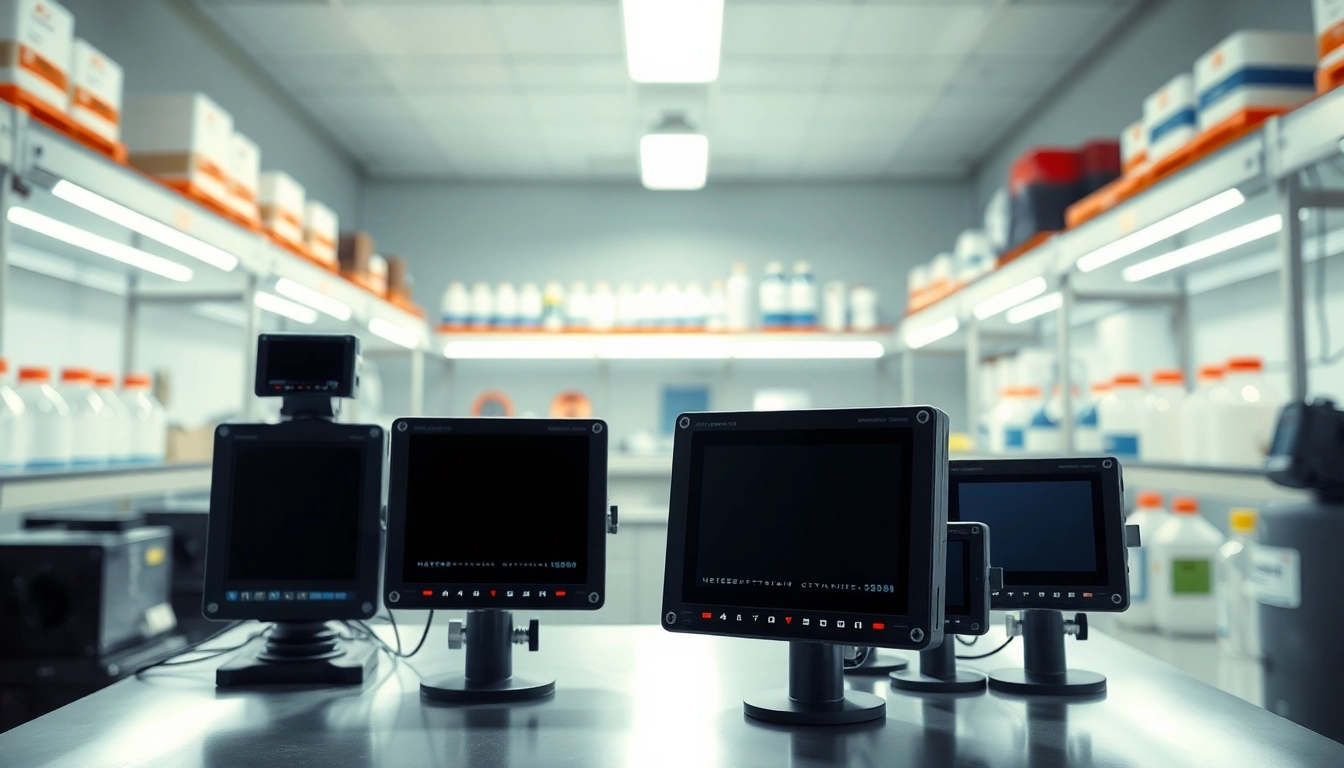Choosing the Right Hydrogen Cyanide Monitor for Enhanced Safety
Understanding Hydrogen Cyanide Monitors
Hydrogen cyanide (HCN) is a colorless, extremely poisonous gas that poses severe health risks to workers across various industries. For safety protocols, the right monitoring equipment is critical. A well-designed Hydrogen Cyanide monitor serves as a vital tool in environments where HCN exposure is a concern, from chemical plants to laboratories. This article delves into what these monitors are, how they operate, their applications, key features, and best practices for utilization.
What is a Hydrogen Cyanide Monitor?
A hydrogen cyanide monitor is an instrument specifically designed to detect the presence and concentration of HCN in the air. Typically employed in industrial settings, these monitors are integral in preventing overexposure to this hazardous substance. They function similarly to other gas detectors but are calibrated to accurately identify HCN levels due to its unique properties.
How Do These Monitors Work?
Hydrogen cyanide monitors utilize several sensing technologies to measure HCN concentrations. The most commonly used methods include electrochemical sensors, infrared sensors, and photoionization detectors (PID).
- Electrochemical Sensors: These sensors work by providing an electrical signal proportional to the concentration of hydrogen cyanide present. They are widely favored for their accuracy and sensitivity levels.
- Infrared Sensors: Infrared technology detects gas concentrations by measuring the absorption of infrared light at specific wavelengths associated with HCN molecules. This method is beneficial in environments with varying temperatures and humidity levels.
- Photoionization Detectors (PID): PIDs employ ultraviolet light to ionize gas molecules and measure their concentration based on the resulting current. These detectors can alert users to the presence of HCN, even at very low levels.
These technologies, when calibrated correctly, ensure accurate detection and rapid response to hazardous HCN levels.
Common Applications Across Industries
Hydrogen cyanide is commonly found in several industrial processes. Consequently, hydrogen cyanide monitors have diverse applications, including:
- Chemical Manufacturing: Used to monitor emissions during the production of pesticides, fibers, and plastics.
- Mining: In underground operations, HCN may be released during the extraction of certain minerals. Monitors help in maintaining a safe environment.
- Health and Safety Labs: Laboratories working with HCN require continuous monitoring to ensure compliance with safety regulations.
- Fire Services: In case of a fire involving certain chemicals, HCN can be released. Firefighters use monitors to evaluate the air quality and protect themselves from toxic exposure.
Key Features to Look for in a Hydrogen Cyanide Monitor
Selecting the right hydrogen cyanide monitor requires knowledge of specific features that enhance performance, accuracy, and usability. Here are the key elements to consider:
Sensor Technology: Types and Accuracy
Different types of sensors operate on varied principles, leading to significant differences in accuracy, response time, and durability. Since HCN exposure can lead to rapid health effects, accuracy is paramount. Consideration should also be given to the sensor’s operational limits—sensor types vary in their responsiveness to specific gas concentrations.
User Interface and Data Interpretation
A user-friendly interface is essential for efficient monitoring. Look for models that present data in an intuitive format, easy to understand even under high-stress conditions. Features like backlit displays, clear numerical values, and alarm indicators ensure that users can quickly interpret the readings and respond accordingly.
Durability and Environmental Resistance
Since hydrogen cyanide monitors are often used in harsh environments, they must be durable and resistant to elements such as dust, moisture, and extreme temperatures. Monitors should ideally have a rugged construction and be rated in accordance with industry standards for environmental protection.
Best Practices for Using Hydrogen Cyanide Monitors
To maintain the safety and integrity of monitoring systems, industry professionals must adhere to best practices. The following strategies can enhance the effectiveness of hydrogen cyanide monitoring:
Regular Calibration and Maintenance Strategies
Calibration is crucial for ensuring the accuracy of hydrogen cyanide monitors. Regularly scheduled calibration with certified gases will help maintain sensor integrity. Implementing a strict maintenance protocol, including battery and sensor checks, ensures consistent performance over time.
Training Your Team on Safety Protocols
Comprehensive training for personnel using hydrogen cyanide monitors fosters a safety culture. Employees should be educated on recognizing alarm indicators, operating the device accurately, and responding swiftly to alerts. Simulations and drills can effectively prepare your team for emergencies.
Interpreting Data and Responding to Alerts
Interpreting data accurately is essential for effective action. Set clear protocols for responding to various alarm levels, ensuring that the team knows when to evacuate, investigate, or call for assistance. Periodic reviews and updates of response plans help adapt to any changes in operational protocols.
Comparative Review of Top Hydrogen Cyanide Monitors
Numerous hydrogen cyanide monitors are available on the market. To make an informed decision, it is crucial to compare models based on features, performance, and user experiences.
Feature-by-Feature Analysis of Leading Brands
Analyzing different manufacturers and their offerings reveals specific strengths. Evaluate models based on their calibration method, sensor technology, alarm capabilities, and user-friendliness. Leading brands often excel in specific features, providing competitive advantages.
Price vs. Performance for Your Needs
Budget constraints are common, but it is essential to balance cost with performance needs. While cheaper models may be tempting, they might compromise safety. Reviews and product testing can clarify which models deliver the best returns on investment based on price-performance ratios.
User Experiences and Testimonials
Feedback from users offers real-world insights into product reliability and effectiveness. Reviews can highlight experiences related to ease of use, customer support from manufacturers, and overall satisfaction with monitoring capabilities. Such testimonials can play a pivotal role in guiding purchasing decisions.
Investing in a Hydrogen Cyanide Monitor: Cost and Compliance
Understanding the financial implications of investing in a hydrogen cyanide monitor is vital for compliance and budget preparation. Organizations must weigh the costs against potential benefits to ensure that safety standards are met.
Understanding Regulatory Requirements
Various regulatory agencies have specific guidelines for monitoring toxic substances such as hydrogen cyanide. Familiarizing oneself with OSHA, EPA, and industry-specific standards can help ensure compliance and avoid penalties, reinforcing the need for reliable monitoring solutions.
Long-term Cost Savings through Safety
While upfront costs may seem steep, investing in high-quality hydrogen cyanide monitors often leads to long-term savings via reduced health-related incidents, potential fines, and increased productivity stemming from enhanced safety conditions for employees. Safety investments can protect both lives and bottom lines.
Future-Proofing Your Investment in Monitoring Technology
With rapid advancements in monitoring technology, selecting equipment that can be upgraded or configured for new gas detection technology is essential. Researching manufacturers who provide continuous support and updates will ensure your investment remains effective over time, adapting to regulations and technological advancements.














Post Comment